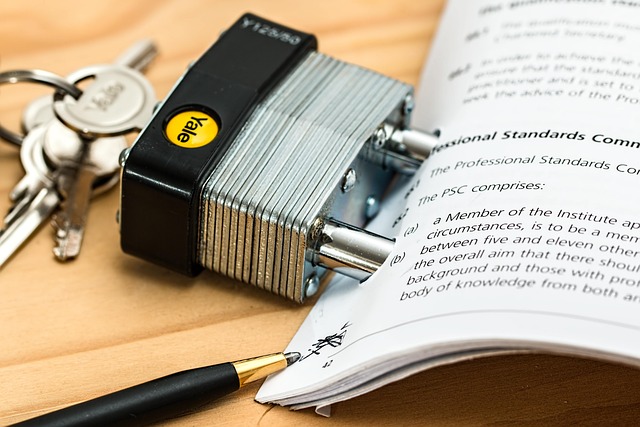Understanding key terms in student rental agreements is crucial for informed housing decisions. "Lease term," "rent amount," and "security deposit" have significant impacts on tenants' rights and responsibilities. Transparent agreements, clearly outlining rent, deadlines, maintenance, and rules, build trust between landlords and students. Both parties have defined rights; students are entitled to safe living conditions and clear communication, while landlords must maintain safety and adhere to rental terms. Reviewing lease clauses about rent increases and maintenance is key to avoiding disputes, with mediation or arbitration offered as dispute resolution options.
Navigating student rental agreements can be overwhelming, but understanding key terms and rights is essential for a smooth living experience. This guide simplifies complex legalities, offering insights into student rental agreements, from legal protections to common clauses. Learn about creating fair leases, knowing your rights and responsibilities, and resolving disputes effectively. By the end, you’ll be equipped with the knowledge to make informed decisions when securing off-campus housing as a student.
- Understanding Key Terms in Student Rental Agreements
- Legal Protections for College Tenants
- Creating a Fair and Transparent Lease
- Rights and Responsibilities of Students and Landlords
- Common Clause to Watch Out For
- Resolving Disputes: A Student's Guide
Understanding Key Terms in Student Rental Agreements

When browsing through student rental agreements, there are several crucial terms and conditions that students should familiarize themselves with before signing. Key phrases such as “lease term,” “rent amount,” and “security deposit” are common in these agreements, each holding significant meaning for tenants. The lease term outlines the duration of the tenancy, while the rent amount specifies the financial commitment expected from students throughout their stay.
Additionally, security deposits—a sum of money held by the landlord to cover any potential damages—are often a point of discussion. Students should understand what is expected of them and when this deposit might be refunded. Knowing these terms empowers students to negotiate and make informed decisions regarding their off-campus housing choices, ensuring a more transparent and beneficial experience in student rental agreements.
Legal Protections for College Tenants

Student rental agreements, while seemingly straightforward, come with a range of legal protections designed to safeguard both landlords and tenants. These protections ensure fairness and security for college students navigating their first independent living experience. Key provisions often include clear terms regarding rent amounts, payment deadlines, and consequences for late or missed payments.
Additionally, student rental agreements typically outline maintenance responsibilities, setting expectations for when and how repairs and upkeep should be handled. This helps prevent disputes between tenants and landlords. More significantly, these agreements must comply with local tenancy laws, providing legal recourse for students facing unfair treatment or harassment from their landlords.
Creating a Fair and Transparent Lease

When drafting lease agreements for college students, creating a fair and transparent contract is paramount. Student rental agreements should be clear, concise, and easily understandable, outlining all terms and conditions in plain language. This includes details about rent amounts, payment schedules, maintenance responsibilities, and any specific rules or restrictions of the property. By providing a straightforward and accessible agreement, landlords can ensure tenants are well-informed, reducing potential disputes and fostering a positive living environment.
Transparency also involves disclosing any hidden fees or potential charges. Students should be made aware of utility costs, security deposits, and any additional rules regarding subletting or guests. Equitable lease agreements build trust between landlords and tenants, promoting a harmonious relationship that benefits both parties throughout the rental term.
Rights and Responsibilities of Students and Landlords

When it comes to student rental agreements, understanding the rights and responsibilities of both students and landlords is paramount. Students have the right to a safe and habitable living space, free from health and safety hazards. This includes access to basic amenities like clean water, functional utilities, and well-maintained common areas. They also possess the freedom to decorate their spaces as long as it doesn’t violate lease terms or cause damage.
Landlords, on the other hand, are responsible for ensuring the property meets all safety standards and providing timely maintenance. They must uphold the terms of the rental agreement, clearly communicate any rules and regulations, and provide adequate notice before increasing rent or terminating the lease. Transparent communication and mutual respect are key to fostering a positive student rental experience, ultimately leading to a harmonious living environment.
Common Clause to Watch Out For

When reviewing student rental agreements, there are several clauses that deserve extra attention. One critical aspect is understanding the terms related to rent increases. Some leases include clauses allowing landlords to raise rents significantly each year, often tied to a specific index or market rate. Students should be wary of these provisions as they can lead to substantial financial burdens, especially if they plan to stay in the same accommodation for multiple years.
Additionally, students should look out for maintenance and repair responsibilities. Many student rental agreements may shift the burden of maintaining the property’s structural integrity onto the tenants’ shoulders. It’s essential to clarify who is responsible for regular upkeep, repairs, and major maintenance issues to avoid unexpected costs and ensure a safe living environment.
Resolving Disputes: A Student's Guide

When disputes arise in student rental agreements, it’s important to understand your rights and options before taking action. The first step is to review your lease thoroughly to identify any clauses related to dispute resolution, such as mediation or arbitration requirements. Many student rentals include these provisions, which can offer a faster and more cost-effective alternative to traditional court proceedings.
If your lease doesn’t specify a dispute resolution method, you may still have recourse. Students can often escalate issues to their university’s housing office, which acts as a mediator between landlord and tenant. Additionally, local tenancy boards or consumer protection agencies can provide guidance and, in some cases, enforce legal rights outlined in student rental agreements. Keeping detailed records of all communications and documentation related to the dispute is crucial for supporting your case and reaching a fair resolution.






